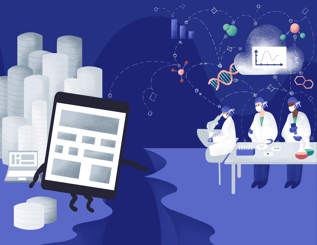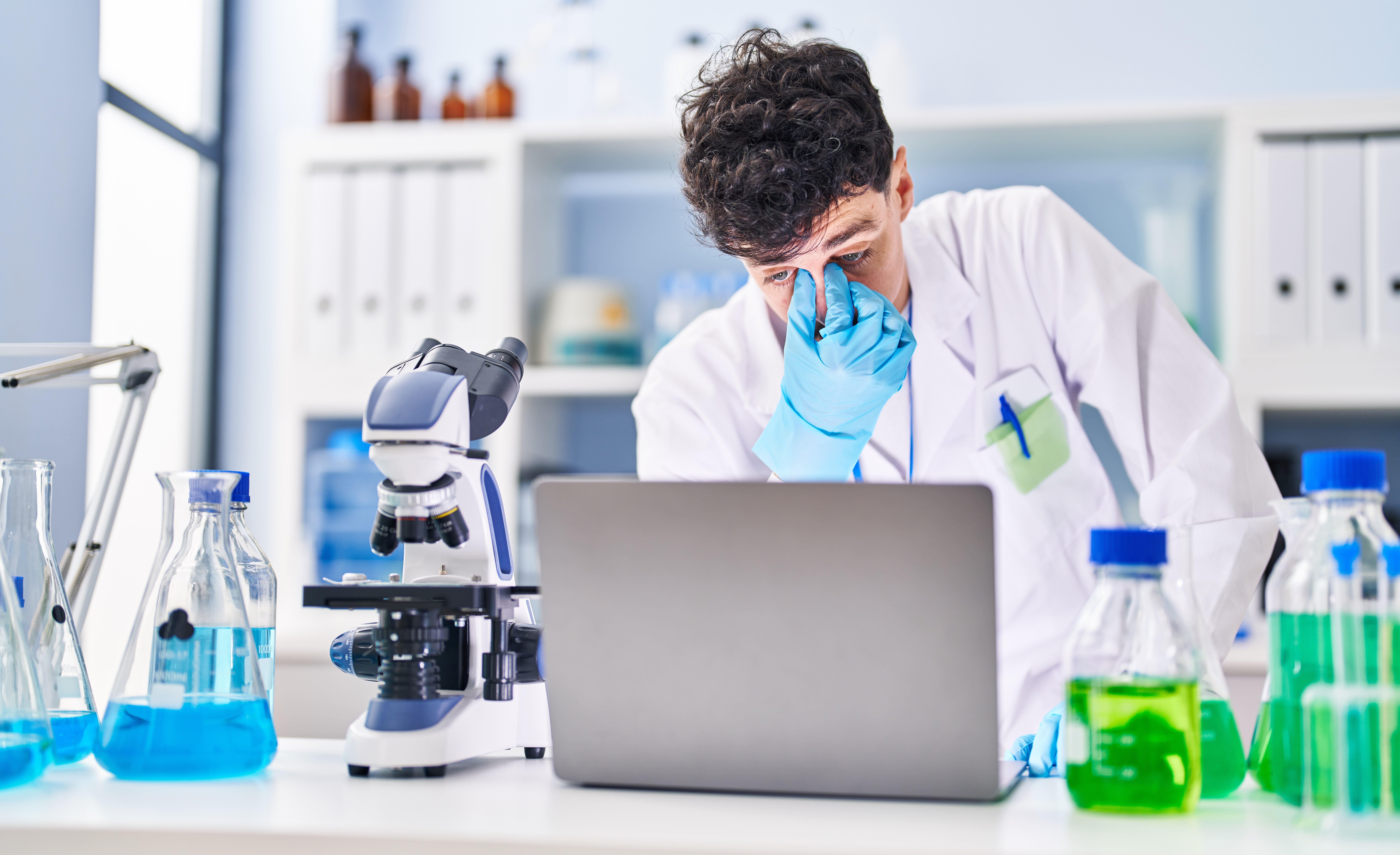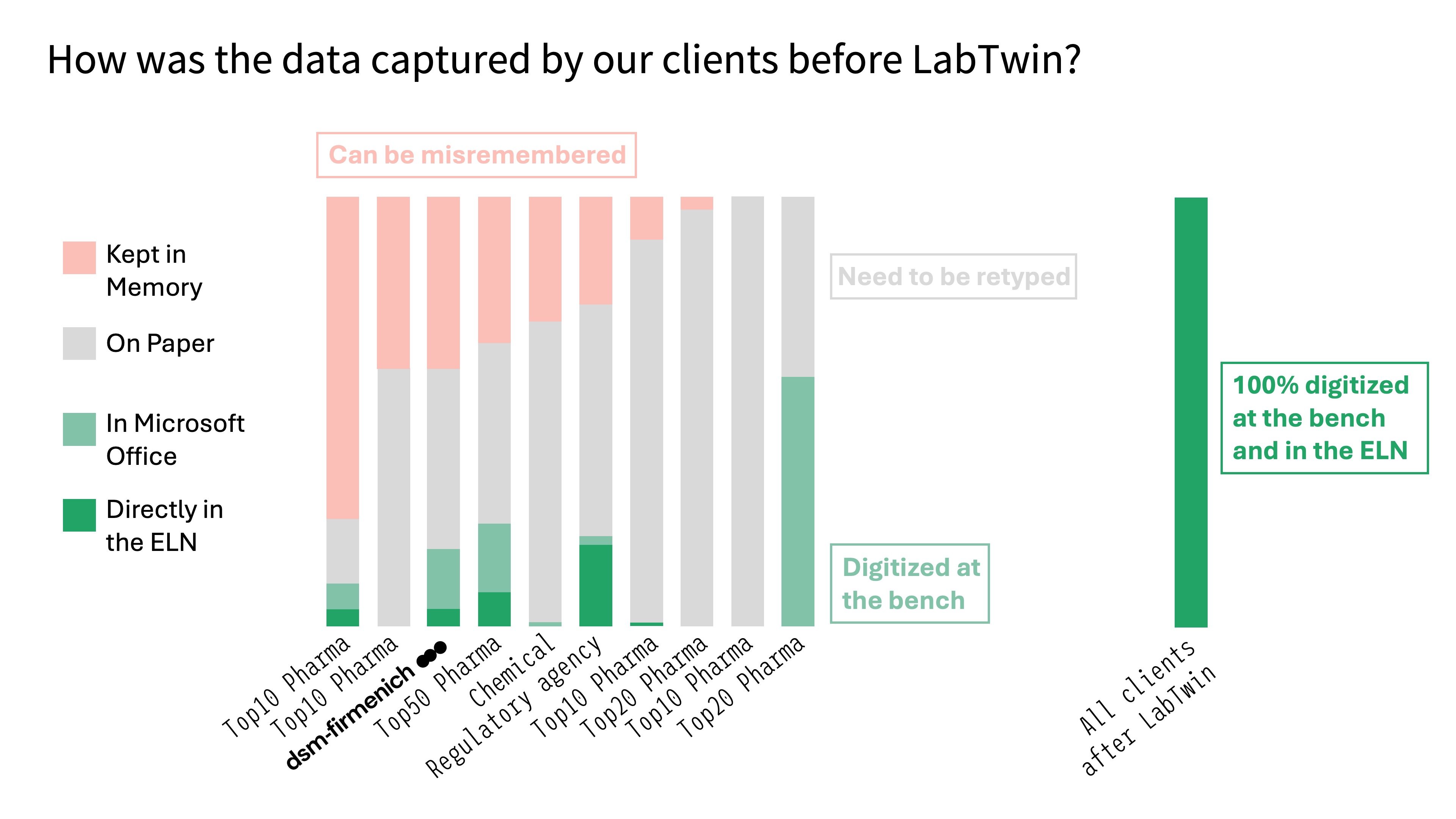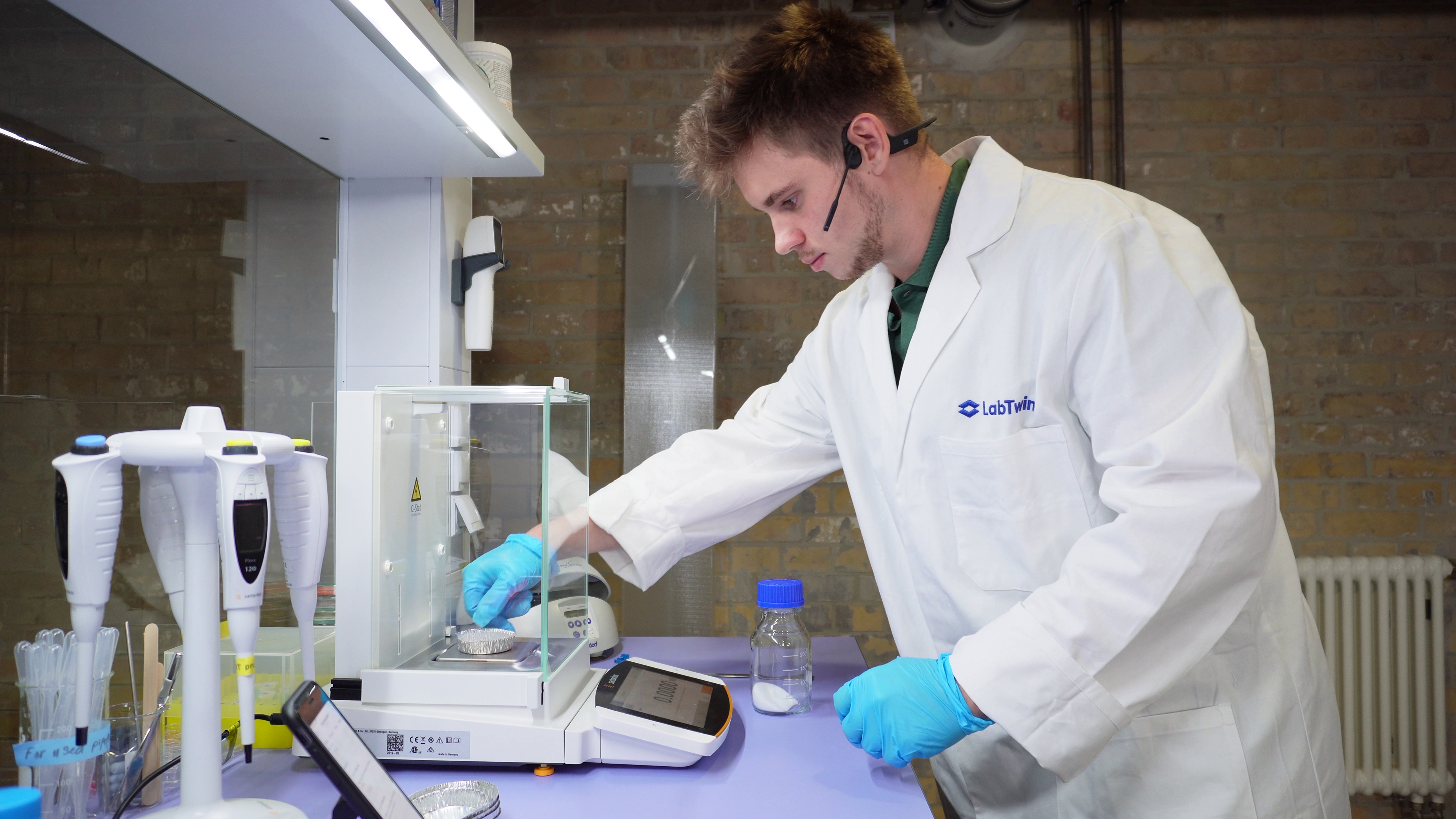
This blog is part of the blog series: Top7 Challenges for R&D Labs Operations and Digitalization: Insights from our Clients.
The challenge of digital data capture
Digitalization is essential to accelerate collaboration and analysis within R&D labs. Yet, relying on paper to collect data from experiments is a hazardous first step prone to error, loss and requires being retyped into a computer with delays that can sometimes span weeks.
This is why Electronic Lab Notebooks (ELNs) have become popular as the digital support for data collection. However, becoming fully paperless and having the ELN used by every scientist is still a classic challenge for most R&D labs.
“We want to achieve a completely paperless lab and are keen on improving our processes whether this means utilizing automation or other digital technologies. Our goal is to make our scientists’ workload easier and seamless for them to upload data and make the most out of the data that we gather,” shares the Chief Information Officer of an Agro-Pharma company.
ELN is not the way
While ELN seemed like the digital solution, its adoption has been incredibly difficult. Some may attribute this challenge to scientists used to working with their own ways for years. But even young, modern, open-minded scientists face real challenges to use the ELN at the bench. It requires interrupting the experiment, removing gloves, logging in, navigating through the interface to find where to enter the data and manually typing it in. It is a disruption that can derail experiments and reduce the chance of success.

Scientist struggling to enter data into the ELN
“It took her thirteen mouse clicks, four windows, five menus to find the check box she needed in the ELN. Reporting directly in the ELN was the most excruciating part of her job and made her lose her focus,” emphasizes Mike Berke, Director at Amgen.
This requires much more effort than scribbling something in the corner of a paper and we know that people or systems always follow the principle of least effort and privilege the path of least resistance. Therefore, only a solution that requires lower effort than their current one would gain adoption. And this is what we are striving for by developing LabTwin, a voice assistant for scientists to capture data hands-free during experiments (Download our white paper: "Why ELNs need a helping hand… or voice?”).
We ran an analysis with several of our clients to surface how the data capture was actually performed in the lab (see graph below). On average, only 2.8% of the data was directly typed into the ELN at the bench and 8.9% in Microsoft Office (Word or Excel). Meaning only a total of 11.7% is directly digitalized. 54.2% is still captured on paper, then retyped at some point. And interestingly 21.6% of the data is kept in memory until the end of the experiment, then hopefully entered into a computer, with the risk of errors. While there is variability among our clients, none of them have achieved more than 15% of data capture directly in the ELN.

Analysis from our clients on how they captured data at the bench before LabTwin
This data shows very neatly that rolling out an ELN is not sufficient to solve the digital data capture issue and when paper use is reduced, it is only because scientists don’t document anymore and try to remember their mental notes once back in the office.
“We realized that even if we have an ELN, and might even have a laptop in the lab, scientists don’t enter their data directly because they would still need to interrupt their experiment. And that’s indeed something that LabTwin can solve for us: hands-free documentation and directly digitalized,” explains Marija, Scientist at dsm-firmenich (Download the dsm-firmenich case study).
Scientists need an interface fitting their situation
Indeed, today, the major parameter for adoption is the usability of the user interface. Why do I need to go to the computer when I can do it on the fly on my phone? Why would I need to click through the different menus when I can just ask? Everyone is used to the convenience of smartphones to manage our everyday tasks, from buying a public transport ticket to taking pictures or checking facts. Why not leverage this convenience for work as well?
“We want to integrate our LIMS & ELN systems with smart solutions and equipment so we can enhance the experience within the labs and make our workers’ day-to-day tasks easier with better hardware and automated digitalized solutions,” announces the Processs Manager Digital Innovation R&D of a Material Science company.
And in fact, scientists who used LabTwin managed to get 100% of this data digitalized at the source and for those who integrated it into their ELN, this data is simply uploaded there within hours instead of weeks, shortening the delay of data exchange between collaborators and accelerating the experiment turnover.

Capturing data hands-free at the bench using LabTwin
If we want to get more accurate and richer data from scientists, ideally in a structured format, it is the role of the organization to understand the challenges faced by the scientists during their experiments and provide the adapted tools that would make both parties happy.
If you are ready to solve your data capture challenges, book a call with one of our digital experts and see by yourself how our product works and discuss how we would work together to support you in transforming your data capture into a 100% digital one at the source.

%20(1)-1.png?width=164&height=164&name=Ellipse%2052%20(Stroke)%20(1)-1.png)